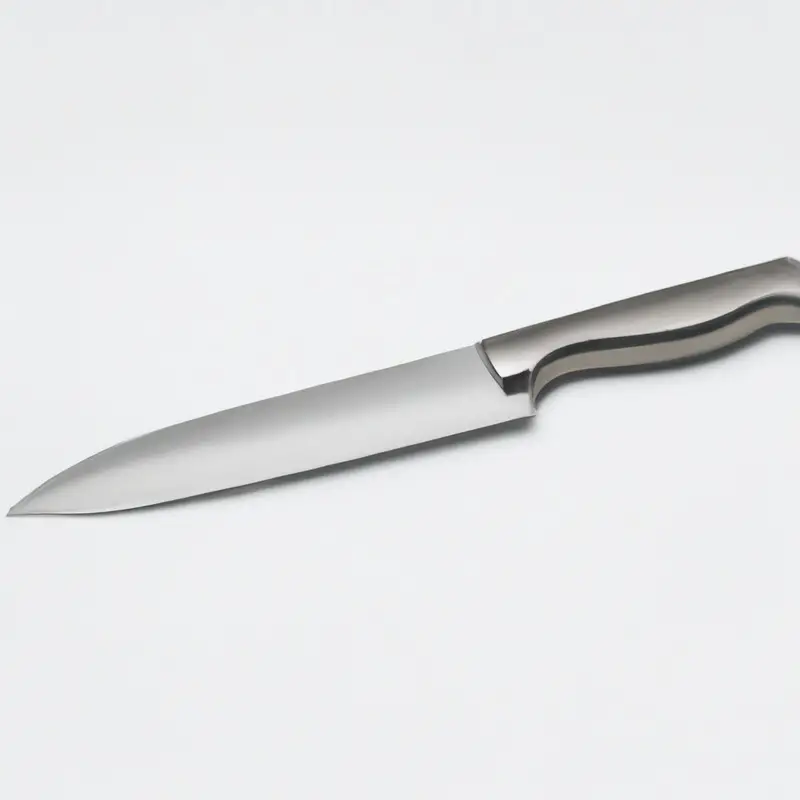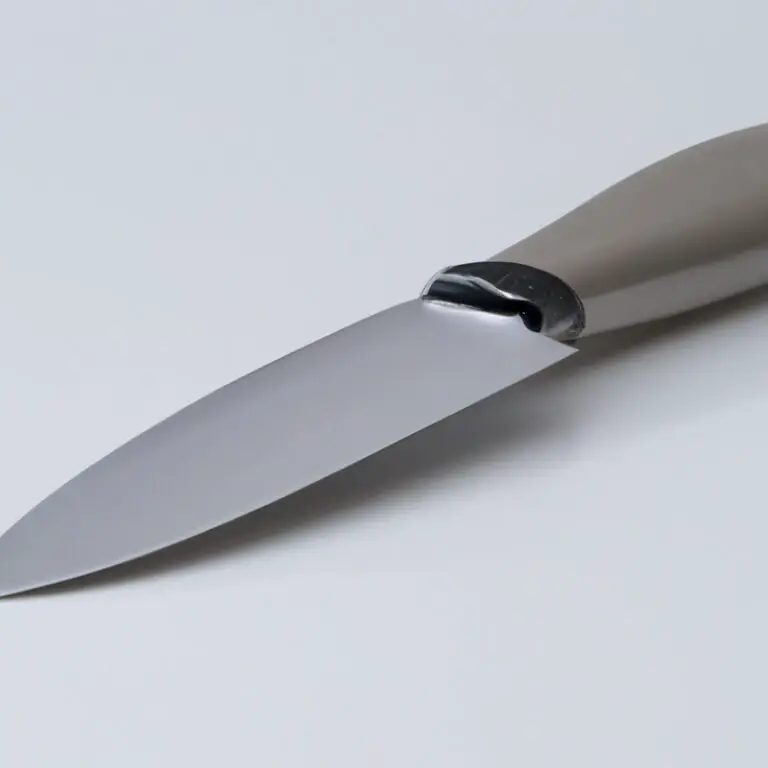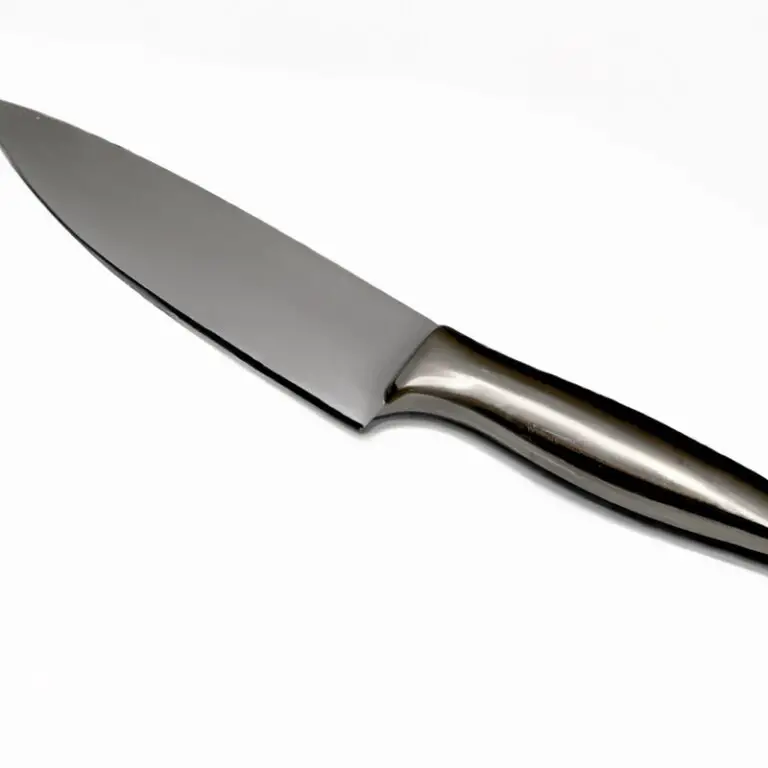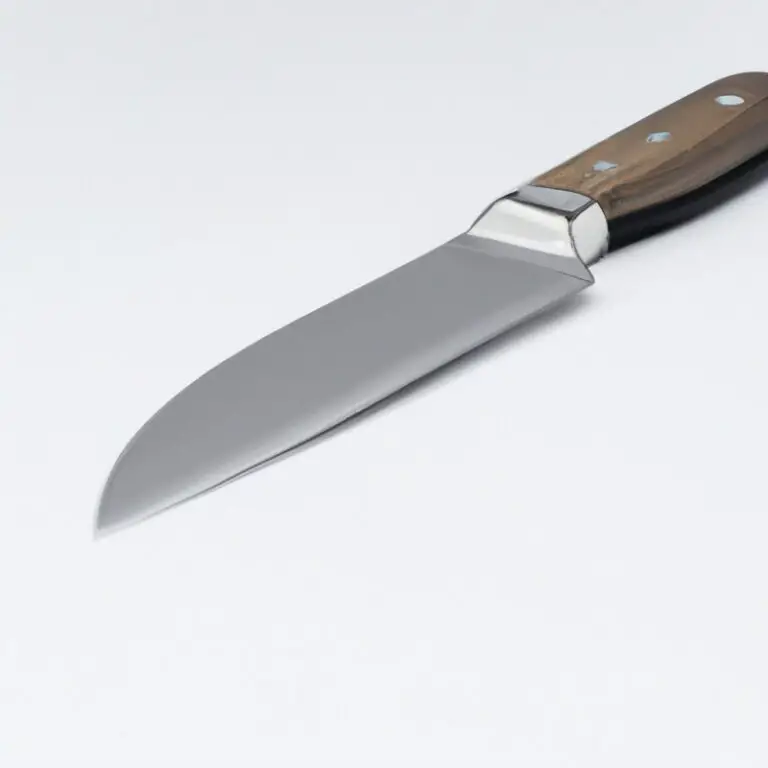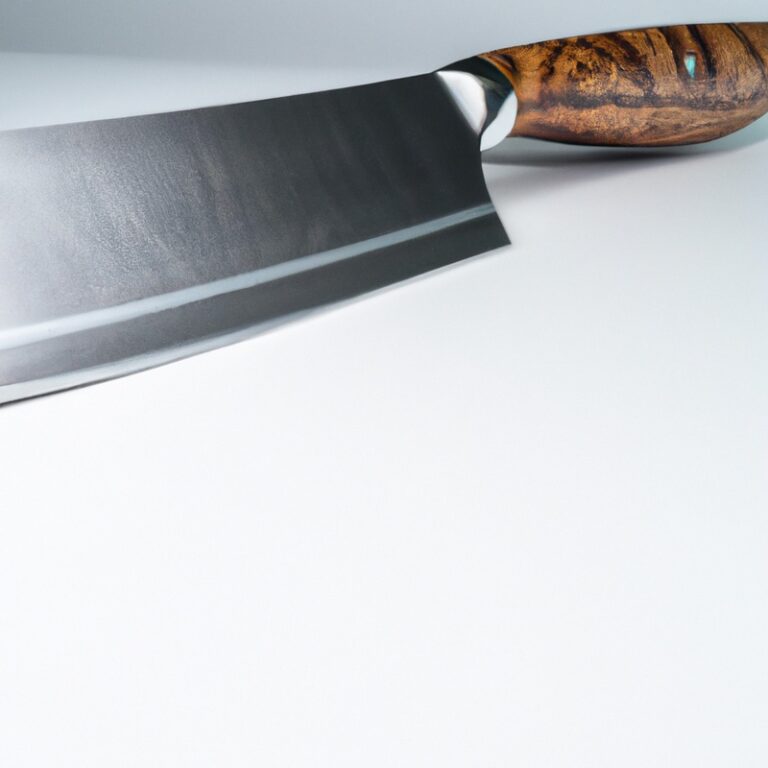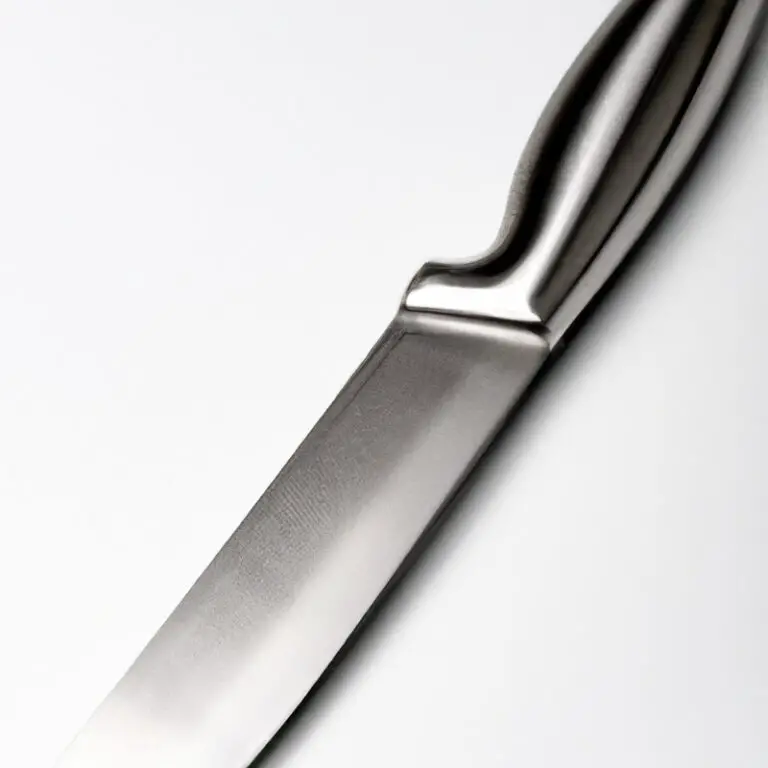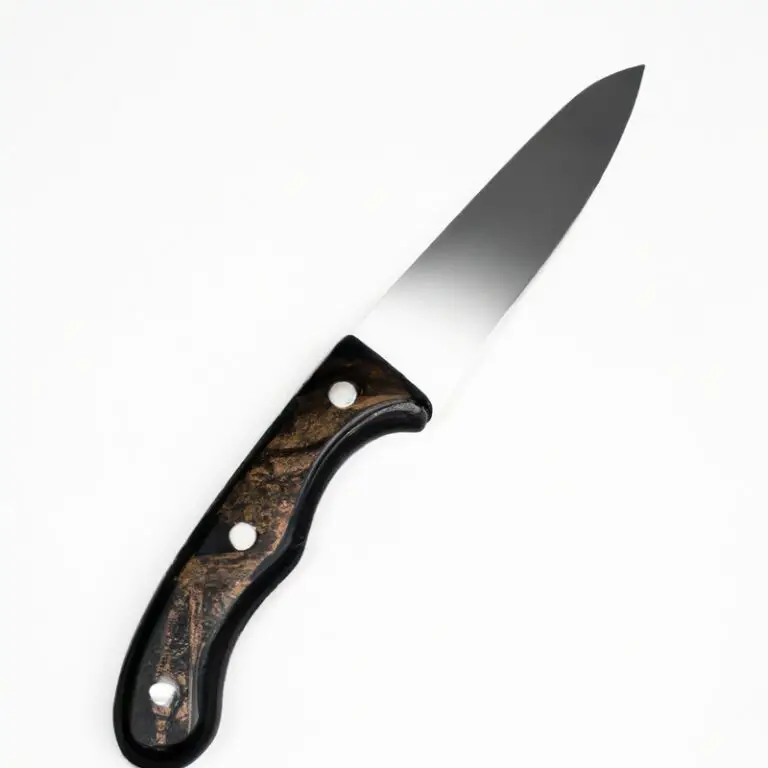How To Remove Adhesive Residue From Paring Knife Handle Effortlessly
Key Takeaways:
- Use a solvent like rubbing alcohol or nail polish remover to remove adhesive residue from a paring knife handle.
- Apply the solvent to a cloth or paper towel, and rub the affected area until the residue is gone.
- Consider using a mild abrasive like baking soda or toothpaste if the residue is stubborn or hard to remove.
- Always exercise caution when handling sharp objects, and be sure to thoroughly clean and dry your knife handle after removing any residue.
Are you tired of using a knife handle that’s sticky and gooey from adhesive residue? Not only is it unsightly, but it can also make it difficult to use the knife properly.
In this article, I’ll share some tips on how to remove adhesive residue from your paring knife handle.
From using household items like vinegar or baking soda to specialized adhesive removers, I’ll walk you through the steps to make your knife handle clean and like new again. But first, let’s talk about why adhesive residue on your knife handle is a problem in the first place.
| Method | Materials | Steps |
|---|---|---|
| Rubbing alcohol | Cotton ball or cloth, rubbing alcohol |
|
| Vinegar | Cloth, white vinegar |
|
| Baking soda and water | Baking soda, water, cloth |
|
| Petroleum jelly | Petroleum jelly, cotton ball, cloth |
|
The problem with adhesive residue on your knife handle
Adhesive residue on your knife handle can be a nuisance, causing the handle to feel sticky and reducing the grip. It can also attract dirt and debris, making the handle unhygienic.
Adhesive residue can be left on your knife handle after removing stickers or labels.
Moreover, it can damage the handle’s finish if left unattended for an extended period. Therefore, it’s essential to remove adhesive residue from your knife handle as soon as possible to avoid any permanent damage.
Choosing the right tools for the job
When it comes to removing adhesive residue from your paring knife handle, using the right tools can make the process easier and more effective. Some of the tools you may need include:
- Soft-bristled brush: This can be used to scrub the residue off the handle gently.
- Adhesive remover: Specialized adhesive removers are available in the market, which can be used to dissolve the adhesive. These products may contain chemicals, so be sure to read the label and follow the instructions carefully.
- Household items: Items commonly found in a household, such as vinegar or baking soda, can also be used to remove adhesive residue. However, their effectiveness may vary depending on the type and strength of the adhesive.
When selecting the tools, evaluate the level of residue on the knife handle. If the residue is thick and challenging to remove, it is better to opt for a specialized adhesive remover.
For minor residue, household items or a soft brush can be sufficient.
It is essential to take precautions to avoid damaging the knife handle while removing the adhesive. Avoid using abrasive tools or harsh chemicals that may scratch or damage the handle’s surface.
Always test the tools on a small area before using them on the entire handle to ensure they don’t cause any damage.
Soaking the knife handle in warm, soapy water
Soaking the knife handle in warm, soapy water can be an effective way to remove adhesive residue. The warm water helps to loosen the adhesive, while the soap acts as a lubricant and helps to dissolve it.
To soak your knife handle, fill a bowl or sink with warm water and add a squirt of dish soap.
Submerge the handle in the water, making sure that the adhesive residue is fully covered. Allow the handle to soak for at least 15 minutes, or until the residue has softened.
After soaking, use a soft-bristled brush to gently scrub away the adhesive residue.
Take care not to scratch the handle, as this can damage the surface. Rinse the handle with clean water and dry it thoroughly with a clean towel.
Although soaking in warm, soapy water is a simple and effective method for removing adhesive residue, it may not work for all types of adhesives.
For more stubborn residue, you may need to try other methods such as vinegar or specialized adhesive removers.
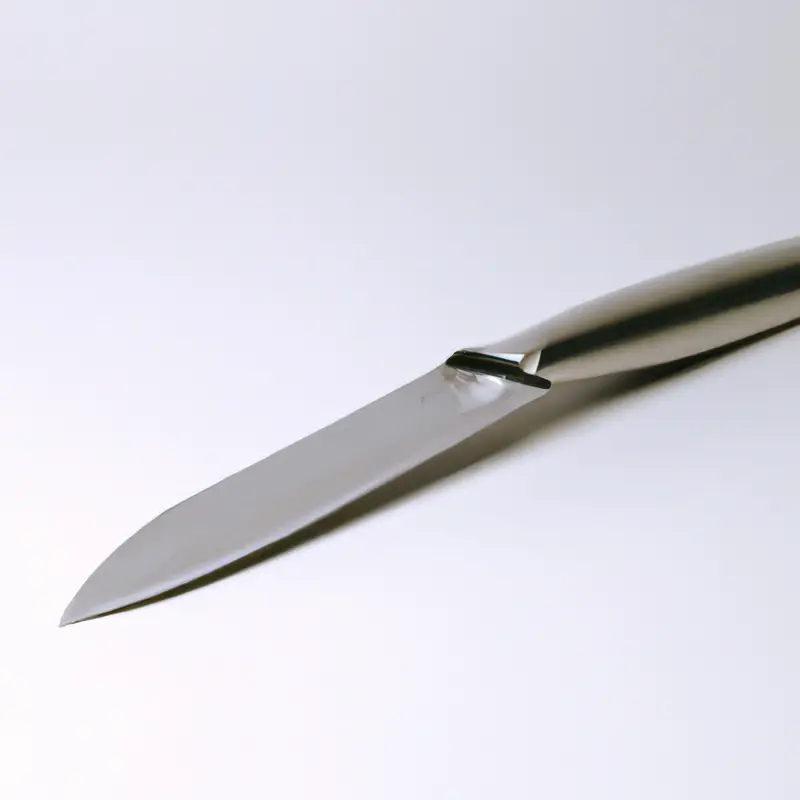
Scrubbing the residue off with a soft-bristled brush
Scrubbing the residue off with a soft-bristled brush is an effective method for removing adhesive residue from your paring knife handle. Start by soaking the handle in warm, soapy water, and then gently scrub the area using a soft-bristled brush.
Avoid using a stiff bristle brush, as it can damage the handle.
Instead, choose a brush with soft bristles that can easily work through the residue without scratching the handle’s surface. Be patient and thorough when scrubbing, as it may take some time to remove all the residue.
Once you have successfully removed the residue, rinse the handle with water and dry it with a soft cloth.
Remember to take precautions to avoid damaging the handle while scrubbing, and to use gentle, yet effective cleaning methods.
Using household items such as vinegar or baking soda
Household items like vinegar or baking soda can be effective at removing adhesive residue from a paring knife handle. Vinegar is a mild acid that can break down the adhesive, making it easier to wipe away.
Soak a cloth in vinegar and wrap it around the handle for 10-15 minutes.
Use a soft-bristled brush to gently scrub away the residue. Rinse the handle with water and dry it thoroughly.
Baking soda can be used as a gentle abrasive to help scrub away the residue.
Make a paste by mixing baking soda with a small amount of water and apply it to the handle. Use a soft-bristled brush to gently scrub the handle, then rinse with water and dry it thoroughly.
Before using household items, test them on a small, inconspicuous area of the handle to ensure they won’t cause damage.
If the residue proves difficult to remove, specialized adhesive removers are also available.
Applying specialized adhesive removers
Specialized adhesive removers are an effective solution for removing stubborn adhesive residue from your knife handle. However, it is crucial to choose a product that is safe for use on your specific knife handle material.
Before applying the adhesive remover, read the instructions carefully and follow the safety precautions.
Apply a small amount of the product on a soft cloth or cotton swab and gently rub it on the residue. Allow the adhesive remover to sit for the recommended time, usually a few minutes, before wiping it off with a clean cloth.
Be sure to test the product on a small, inconspicuous area first to ensure that it does not cause any damage or discoloration.
If the product does cause any damage, stop immediately and try a different adhesive remover or method. Always work in a well-ventilated area and wear gloves to protect your skin from potential irritation.
After removing the adhesive residue, clean and dry the knife handle thoroughly before use.
To summarize, specialized adhesive removers can be a safe and effective solution for removing adhesive residue from your knife handle. However, it is important to choose the right product, follow instructions carefully, and take safety precautions to avoid causing any damage.
Taking precautions to avoid damaging the knife handle
When removing adhesive residue from your paring knife handle, it is essential to take precautions to avoid damaging the knife handle. Here are some precautionary measures to follow:
- Use a soft-bristled brush: When scrubbing off the adhesive residue, use a soft-bristled brush to avoid scratches or scuff marks on the knife handle.
- Avoid harsh chemicals: Do not use harsh chemicals like acetone or bleach to remove adhesive residue as they can damage the knife handle’s material, resulting in discoloration or cracks.
- Test an inconspicuous area: Before applying any cleaning solution, test an inconspicuous area of the handle to ensure that it does not cause any damage or discoloration.
- Rinse the handle: After cleaning the knife handle, be sure to rinse off any residue and dry it thoroughly with a soft cloth to avoid water spots or damage from excess moisture.
By following these precautions, you can effectively remove adhesive residue from your paring knife handle without damaging it.
Cleaning and drying the knife handle after removing adhesive residue
After successfully removing the adhesive residue from your knife handle, it’s important to clean and dry it properly. First, rinse the handle with warm soapy water and wipe it clean with a soft cloth.
Make sure to remove any lingering residue or cleaning solution.
Then, let the handle air dry completely before using it again or storing it. Avoid using heat to dry the handle as it can cause damage.
Regularly cleaning and drying your knife handle will prevent future residue buildup and ensure its longevity.
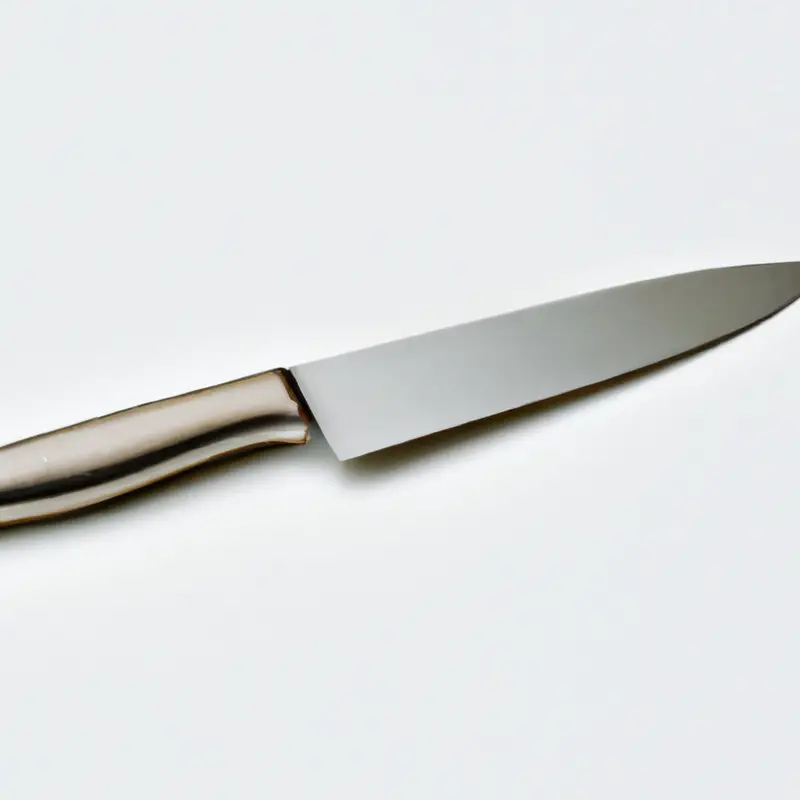
Final Verdict
Removing adhesive residue from a paring knife handle can be a tricky process, but with the right tools and techniques, it can be done successfully without causing damage. From soaking the handle in warm, soapy water to using specialized adhesive removers, there are various methods to choose from.
It is, however, essential to take precautions to avoid damaging the handle and to clean and dry it thoroughly after removing the residue.
By using the techniques outlined in this article, you can effectively remove adhesive residue from your paring knife handle and restore it to its former glory. Remember, the key is to choose the right tools for the job and take care throughout the process.
We hope that this article has provided you with useful insights and actionable tips to help you get the job done right.

